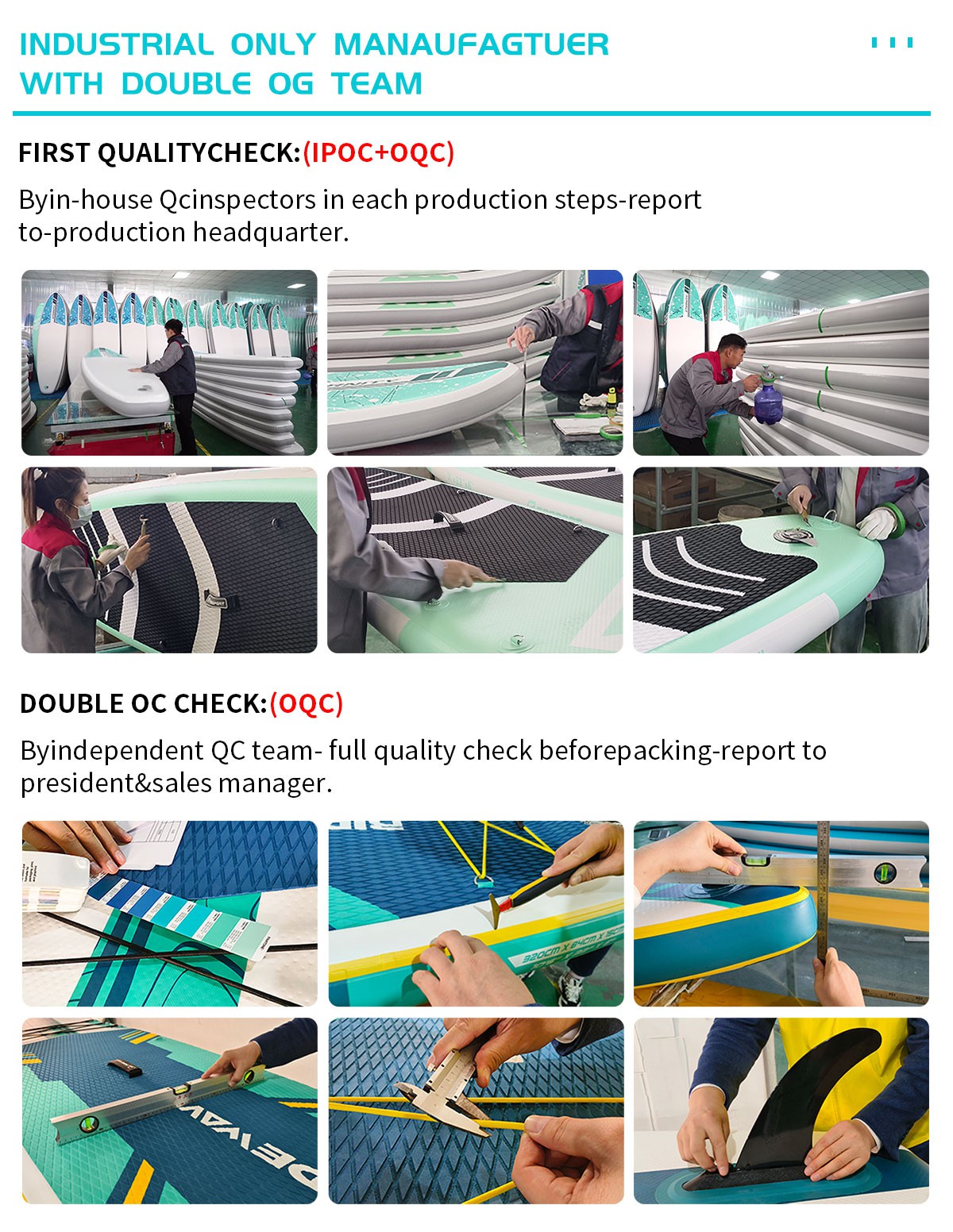The Paddle Board Buyer’s Handbook For International Distributors Part 2
Jun 25, 2025
Leave a message
| From Factory to Market – Turning Paddle Boards into Profitable Products In Part 1 of this handbook, we covered the essentials: global market trends, how to choose a reliable manufacturer, what types of boards perform best in different markets, and how Ridewave supports customization and accessories for brand success. Now it's time to dive deeper. Part 2 focuses on how to get your product from the factory to your customer-safely, on time, and at the right cost. We'll also show how Ridewave helps you manage shipping, ensure consistent quality, handle after-sales challenges, and plan for long-term growth as a global SUP distributor. If you're serious about launching or scaling your paddle board business internationally, this section is where logistics meets leadership. |
For international distributors, inconsistent product quality can damage brand reputation, cause customer complaints, and result in high return rates. That's why selecting a manufacturer with a proven quality control (QC) system is critical. At Ridewave, we take QC seriously-from raw materials to final packaging.
Dual-Stage Inspection: IPO + OQC
Ridewave implements a double-layer inspection system that includes both:
IPO (In-Process Quality Observation): Quality checks during each production phase-material cutting, heat sealing, lamination, printing, and assembly. This prevents defects early and minimizes waste.
OQC (Outgoing Quality Control): 100% inspection before packaging. Boards are inflated, pressure-tested, and visually reviewed to meet strict durability and finish standards.
Ridewave Standard: Every inflatable paddle board undergoes a 24-hour inflation test at 15 PSI to ensure no leaks, delamination, or shape distortion before shipment.
Key Quality Checkpoints:
Raw Materials: Tested for tensile strength, UV resistance, and chemical safety
Adhesive Application: Monitored for evenness, bonding strength, and curing
Valve Assembly: Leak-tested under water bath
Logo Printing: Checked for alignment, color accuracy, and adhesion
Accessory Durability: Zippers, buckles, and seams of backpacks/pumps are stress-tested
In-House Quality Team:
Ridewave employs a dedicated team of independent quality inspectors who report separately from the production department. This ensures objectivity and accountability. Weekly audits and monthly performance reports help maintain a consistent quality benchmark across all batches.
Packaging That Protects and Sells
Updated Version:
Packaging isn't just about protecting the board-it's also the first physical touchpoint with your brand. Great packaging reduces damage rates, boosts your branding, and improves retail readiness.
Ridewave's Dual-Purpose Packaging
At Ridewave, packaging serves two roles: defensive protection and brand presentation.
1. Protection for Global Shipping
Double-wall corrugated cartons designed to resist crushing in container stacking
Moisture-resistant lining to handle high humidity ocean journeys
Compartmentalized interior: Prevents fins, pumps, and paddles from shifting and causing scratches
Foam edge guards to absorb shock in handling
Each box passes vibration, drop, and pressure stacking tests.
2. Professional Brand Appearance
Full-color outer printing with logo, product model, and QR codes
Internal welcome card and manual in distributor's language
Optional: co-branded tape, "ready to sell" UPC stickers
Ridewave 3D Packaging Preview Tool lets you preview your design on actual box templates before production-minimizing errors and speeding up visual approval.
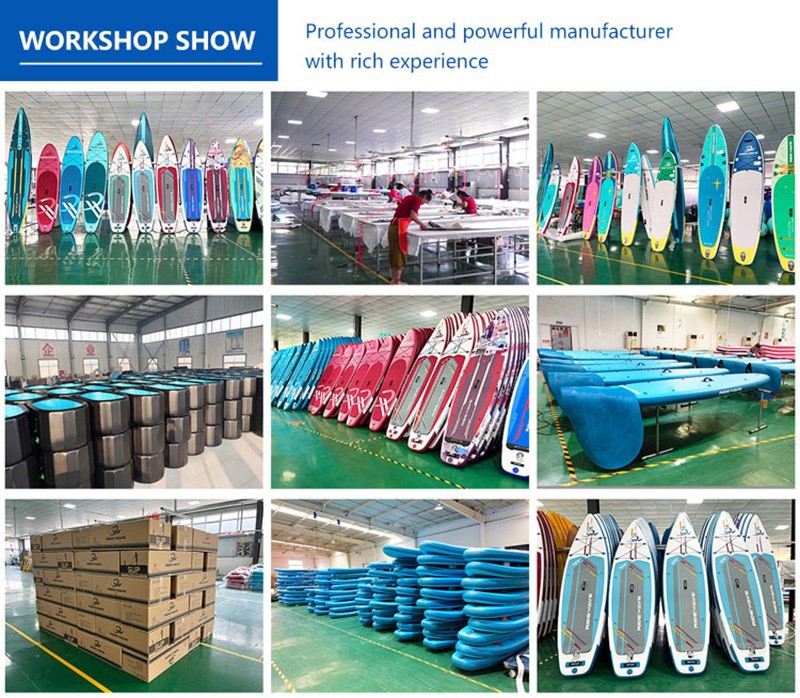
Logistics Planning: Freight, Warehousing & Delivery
Shipping paddle boards internationally involves more than just booking space in a container. A smart logistics plan can save money, avoid delays, and improve customer experience. Whether you're distributing to retailers, e-commerce fulfillment centers, or renting out boards yourself, delivery efficiency is key.
Key Freight Options:
Sea Freight (FCL/LCL): Most cost-effective for bulk orders. FCL (Full Container Load) works best when you ship >200 units; LCL (Less than Container Load) is suitable for trial orders.
Air Freight: Faster but more expensive. Ideal for urgent restocks or high-margin premium lines.
Rail Freight (EU-Asia): A good compromise in delivery time and cost for European distributors importing from Asia.
Ridewave Flexibility: Ridewave coordinates directly with your freight forwarder and offers consolidated shipping for mixed SKUs to reduce costs.
Warehousing Solutions:
Depending on your market, you may want to:
Use bonded warehouses for customs clearance delay mitigation
Store inventory in regional hubs to shorten lead time
Partner with 3PLs to automate eCommerce delivery (e.g., Amazon FBA)
Ridewave Support: Ridewave has experience shipping to over 50 countries and can provide packing specs, container layout drawings, and HS code documentation to speed up customs clearance.
After-Sales Support & Warranty Handling
A well-structured after-sales program enhances buyer confidence, reduces friction with partners, and sets your brand apart in the long term.
What Distributors Should Prepare:
Clear warranty policy (e.g., 1-year against manufacturer defects)
Standard return/refund protocol for faulty units
Spare part kit (valves, repair patches, fins) for regional use
FAQ and video guides for common issues
Ridewave Advantage: Ridewave offers optional co-branded after-sales support materials, downloadable PDF manuals, and staff training to help distributors handle end-customer queries professionally.
Common After-Sales Scenarios:
Valve leaks: Ridewave uses Halkey-Roberts style valves with extra O-ring sealing
Air loss: Often caused by improper PSI inflation or loose valve caps
Print fading: Ridewave uses UV-resistant inks tested for 300+ hours
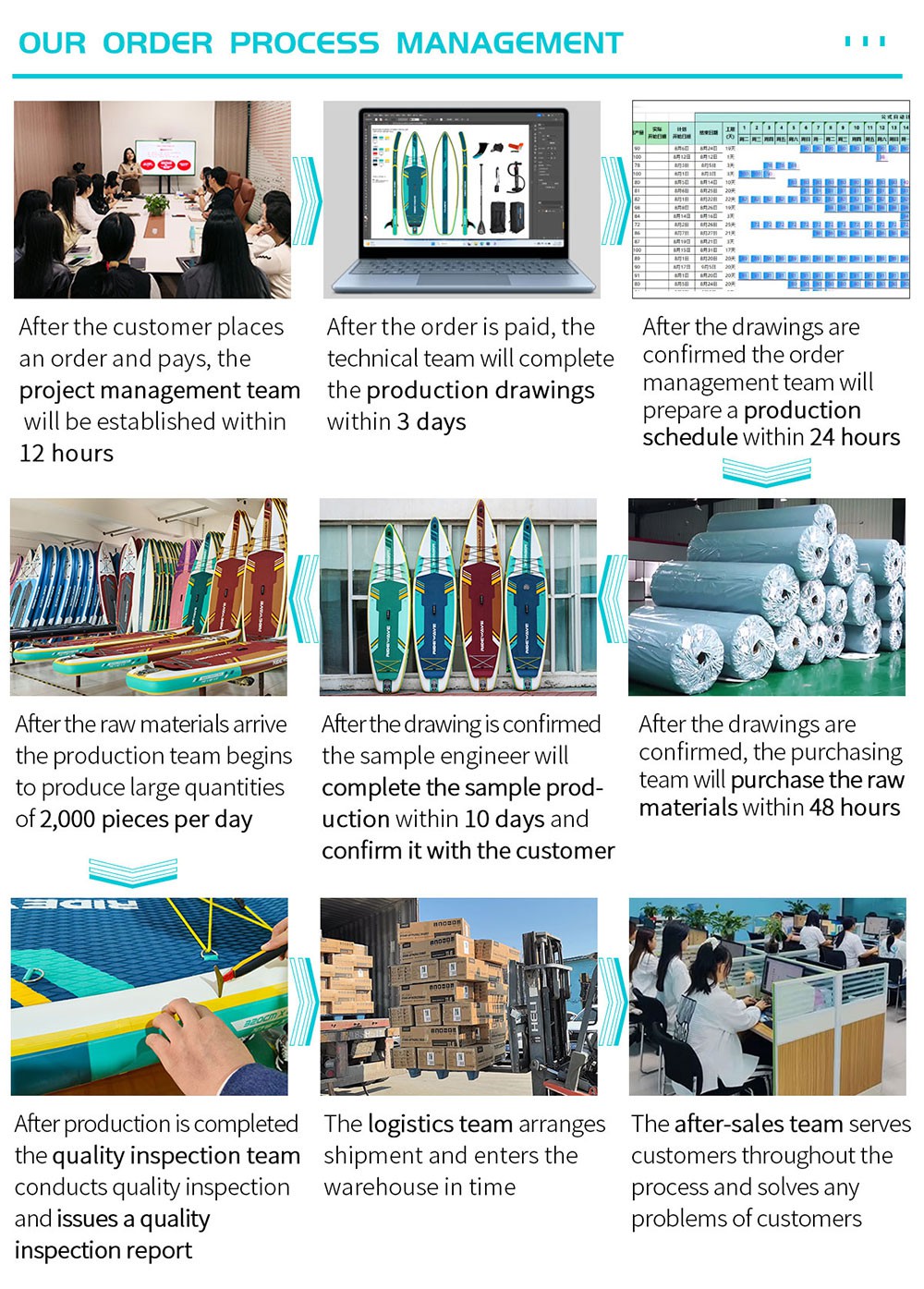
Profit Margins & Pricing Strategy
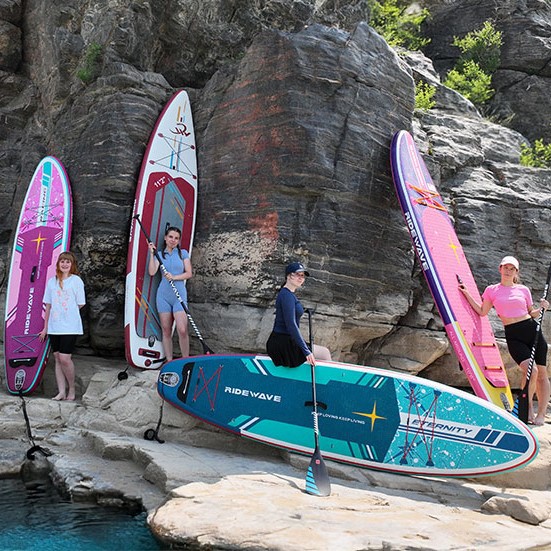
A common challenge for international paddle board distributors is managing price competitiveness while maintaining a healthy margin. To succeed long-term, your pricing strategy should be built around perceived value-not just cost.
Understand Your Cost Breakdown:
Base board cost (based on construction, materials, MOQ)
Accessory pack cost
Branding (packaging, printing, inserts)
Freight & customs duties
Warehousing or fulfillment
Marketing & return/warranty provisions
Ridewave Advantage: By offering bundled pricing on boards + accessories + packaging, Ridewave helps keep your COGS (cost of goods sold) efficient while enabling high retail markup.
Recommended Margin Targets:
Direct to consumer: 60–70%
Wholesale distribution: 30–50%
Rental business resale: 40–55% (with service upsell)
Bundle strategies, seasonal promotions, and tiered pricing by volume help further expand your profit window.
Marketing & Media Support from Suppliers
Launching a paddle board brand doesn't stop at product delivery-you also need compelling content to help your customers sell.
Ridewave Support: Our media team provides co-branded marketing assets, including:
Lifestyle product photos (studio + on-water)
Assembly & usage videos
Social media graphics
Product infographics (for listings and packaging)
Marketing Materials for Your Customers:
Branded instruction manuals with QR codes
Display stand templates for physical stores
Instagram-ready photos of your exact designs
These help both distributors and retailers present your brand professionally from day one.
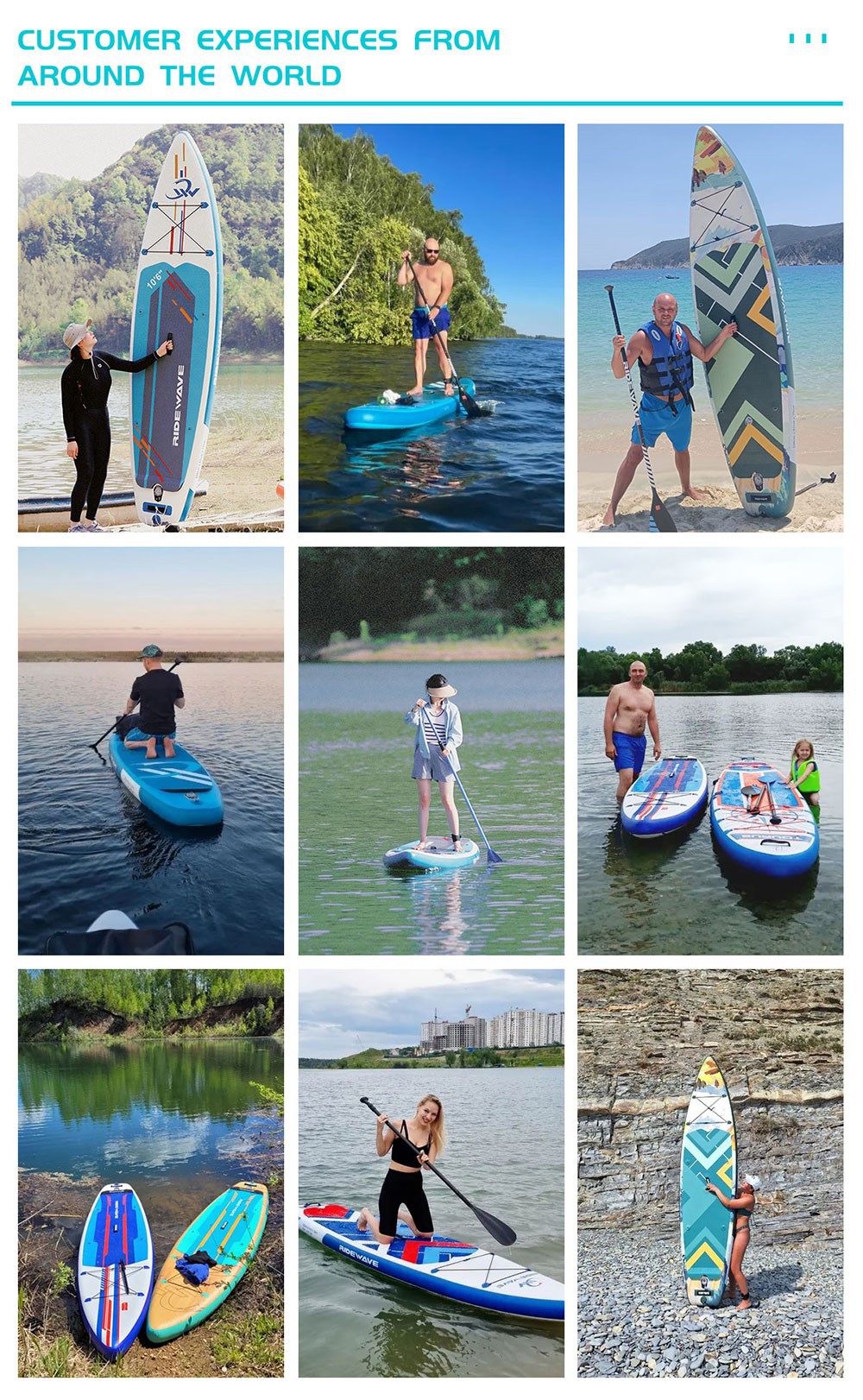
Building Long-Term Supplier Partnerships
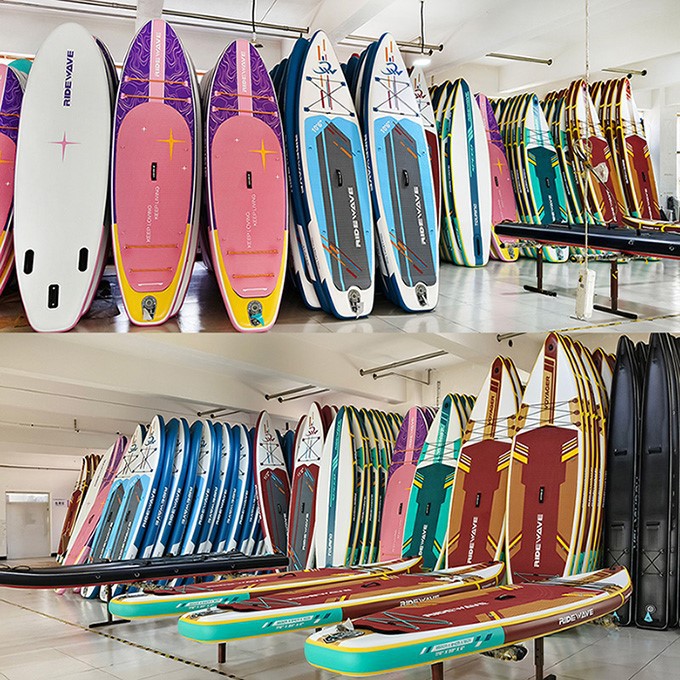
When sourcing from overseas, short-term deals may save pennies-but long-term partnerships unlock reliability, exclusivity, and better support.
Ridewave Partnership Model Includes:
Tiered pricing based on annual volume
Reserved production slots for seasonal pre-orders
Access to early prototype testing
First-look rights on new technology launches
Strong B2B partnerships also build mutual trust. Distributors gain faster service, product priority, and stronger support during peak seasons.
Planning for Growth: Multi-Season Strategy
A scalable paddle board business requires more than one successful launch. Distributors need a multi-season product plan that accounts for new trends, inventory flow, and geographic seasonality.
What to Consider:
Spring/Summer: Launch main touring & all-around boards
Fall: Introduce compact/commuter SUPs + off-season bundles
Winter: Target Australia, New Zealand, Southeast Asia
Pre-orders: Lock in production slots before peak season rush
Ridewave Insight: With access to 30+ ready-made molds and a flexible ODM department, you can launch a new series each season without starting from scratch.
Ridewave also helps you review your past sales, gather retailer feedback, and plan upgrades for the following season.
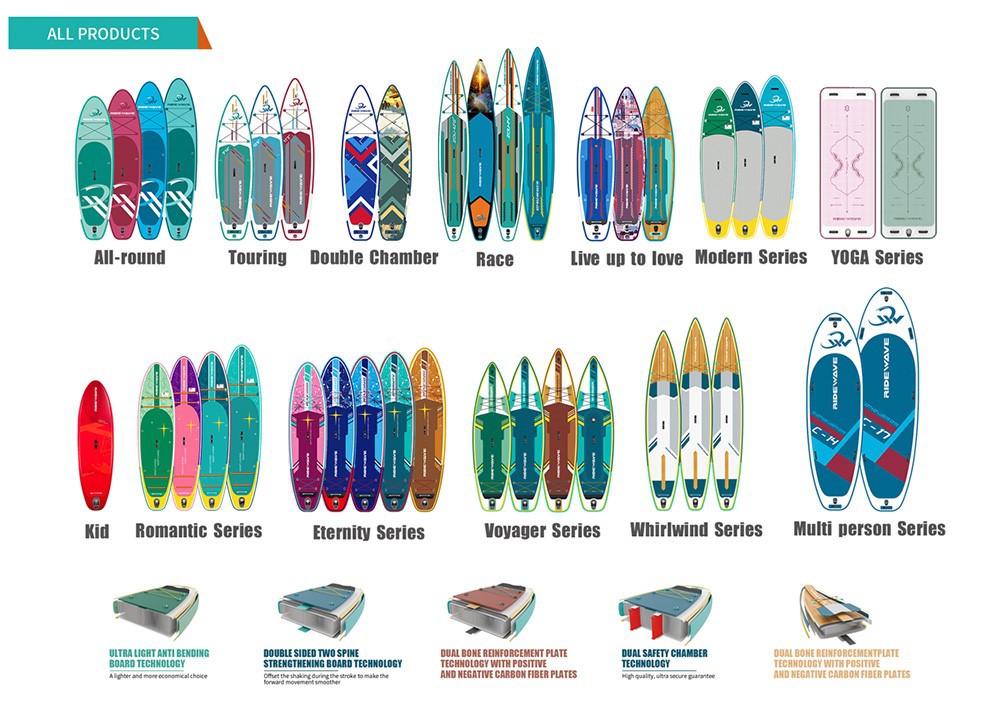
Final Thoughts + Suggested Reads
With the right partners, product line, and growth plan, your paddle board brand can thrive globally. Ridewave is proud to support distributors at every step-from branding and packaging to freight, fulfillment, and customer success.
Ready to scale your SUP business?
Here are more deep-dive articles to help:
1.How to Build a Paddle Board Brand: The Ultimate B2B Success Roadmap
2.Low MOQ, Fast Launch: Why B2B Brands Choose Ridewave to Get Started
3.How to Customize Your SUP Brand: Colors, Prints, Packaging & Accessories That Sell
4.Common Mistakes to Avoid When Importing Paddle Boards from China
5.Top Features B2B Buyers Should Look for in a Paddle Boards Manufacturer


